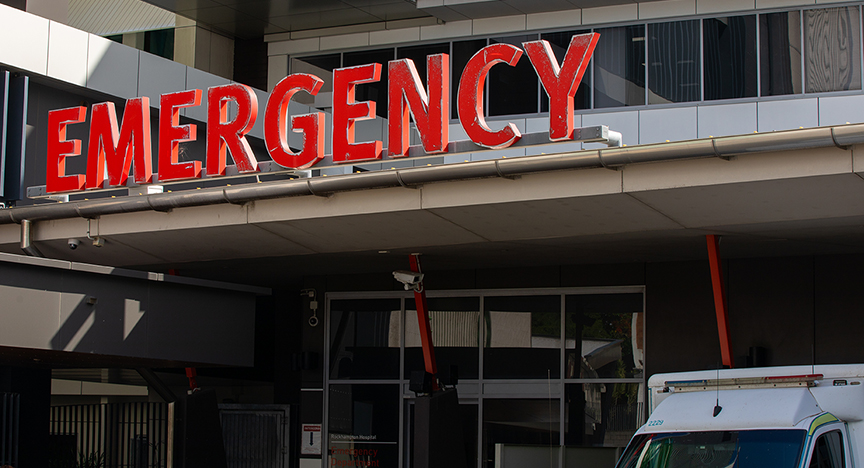
- Central Queensland Hospital and Health Service (HHS) recorded a 6.5 per cent increase in presentations to its emergency departments (EDs) in the March 2024 quarter, compared with the same quarter of 2023.
- Despite the increase in presentations, the median waiting time for ED patients across all five patient categories improved to 13 minutes.
- 61.7 per cent of patients received their elective surgery within the clinically recommended timeframe.
More than 39,000 patients presented to EDs at Central Queensland hospitals in the March 2024 quarter, with 75.9 per cent of patients seen within clinically recommended times.
Data released today shows Central Queensland hospitals recorded a 6.5 per cent increase in ED presentations in the March 2024 quarter compared to the same period last year.
This included 13,375 presentations in Rockhampton, and 10,004 in Gladstone.
Central Queensland Health maintained timely access to care across the region, and the median waiting time for emergency patients across all triage categories was 13 minutes.
100 per cent of Category 1 patients presenting to EDs in Central Queensland were seen within two minutes of arriving at hospital.
Central Queensland Health continues to review services to improve wait times, and has incorporated several initiatives to prevent patients requiring hospital care, including:
- Hospital in the Home where patients get their clinical care and support in their own home.
- Early Access Team in Rockhampton, with suitable patients discharged from hospital safer and sooner, by allied health professionals seeing them at home within 24 hours of leaving hospital.
- Mental health co-responder partnership with Queensland Ambulance Service where a senior mental health clinician and senior paramedic see people in mental health crisis in their homes, rather than hospital.
- Respiratory Rapid Access Service, supporting known patients with a chronic respiratory condition to access early specialist advice from home rather than coming to hospital.
The health service has also introduced a Patient Access Coordination Hub which ensures patients across the region are treated in the right place at the right time, and Patient Flow Commanders in the ED to help with patient flow.
Some of the challenges the healthcare system faces in Central Queensland include pressure on GP capacity and a large percentage of long-stay patients waiting for aged-care or disability placements.
Central Queensland hospitals performed 870 elective surgery procedures in the March 2024 quarter, which is slightly less than the same period last year (929).
The health service continued to work hard to ensure patients received surgery in a timely manner, and 61.7 per cent of patients received their procedure within the clinically recommended timeframe.
This included 516 elective surgeries in Rockhampton, and 315 in Gladstone.
Quotes attributable to Central Queensland Health Chief Executive Lisa Blackler:
“Across Central Queensland we had 39,388 people come to EDs in the March 2024 quarter, which is seven per cent more than the 36,982 in the same quarter last year.
“Our ED teams work tirelessly to provide great care to Central Queenslanders. Patients are triaged according to their level of clinical need, and every category one (seriously sick or injured) patient was seen within two minutes of arriving at hospital.
“Central Queensland has the biggest volumes of long-stay patients in regional centres in Queensland. These people are in hospital beds because there is no safe alternative for them in the community.
“We continue to focus on planned care opportunities and have agreements with private partners to help our patients receive their surgery when they need it in addition to reviewing all solutions.
“We are seeing more people with serious conditions who need emergency care, and more people who need unplanned surgery.
“I thank our teams for continuing to focus on providing great care to their community in the face of growing pressure on our health system.”